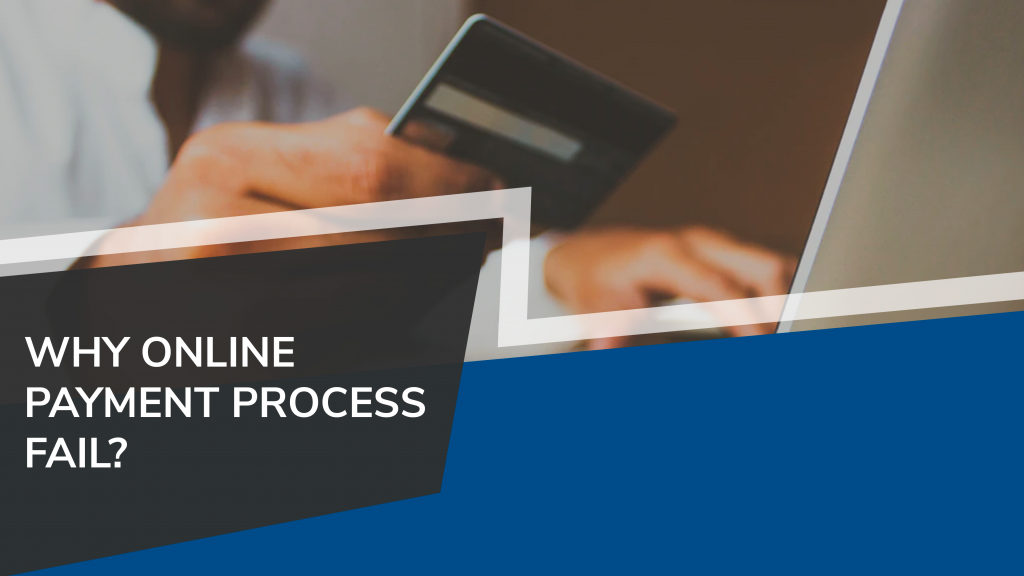
Failed transactions are one of the most common challenges that online businesses and shoppers face whenever online payments are involved. As simple as it may seem, online payment is a complex process. A single glitch in the payment system can cause a cascade of errors that eventually hamper the complete transfer or exchange of money between the two parties involved. Failed transactions occur more often than not—and each it happens, the security and privacy of online shoppers are also compromised. Not to mention, unsuccessful transactions waste the customer’s valuable time and money.
It is a must to know that there are two possible types of unsuccessful payment transactions. It can either be that (1) the amount is not charged or (2) the amount is charged. Basically, the first instance is relatively a minor issue as this only means that there is insufficient money or balance left in the payer’s bank account. As for the second type of failed transaction, it indicates that money has already been processed yet failed to materialize. The second instance usually points to a more serious issue.
But whatever the instance may be, it is still imperative for all users to have an in-depth understanding of the reasons why the processes involved in an online payment system tend to encounter certain discrepancies.
That said, below is a list of the most common reasons why an online payment transaction fails, along with simple ways to avoid these blunders:
1. INTERNET CONNECTIVITY
Since the internet serves as the very backbone of making online payments possible, any issue associated with internet connectivity may abruptly disrupt ongoing payments or stop it from taking place. Additionally, an unstable internet connection can also be a factor that hampers the success of online transactions. In other instances, users tend to be careless when purchasing online—closing their browsers or exiting online payment apps even while the payment process is still ongoing.
In order to avoid these scenarios, it is important to have a stable internet in place when making purchases or sending payments online. Always make sure that payments are successfully completed before closing the browser or application. Check for a verification code or message that confirms the completion of the payment process.
2. DOWNTIME OR MAINTENANCE
For starters, a payment gateway and a bank and/or card firm are required before an online payment process can take place. If any of these components are undergoing downtime or maintenance, there is a high probability that the transaction will not push through.
It is important to stay updated with the card company’s announcement of downtime and maintenance schedules. This way, users will get a heads up and eventually schedule their payments ahead of time. On the other hand, unannounced downtimes are also unavoidable. At times, banks may allow users to transact for a specific timeframe. Should a user fail to make transactions during the given time constraint, the payment process will not be completed.
3. AUTHENTICITY
The bank’s system usually traces the spending patterns of the user. As such, it may flag the transaction if the system detects hints of a security threat. Banks may decline to process the online payment once they see that there is something wrong with the authenticity of the transaction or a user transacts money beyond their usual spending threshold.
This usually happens when the card is used in a different country.
The best way to prevent being flagged by the bank system is to stick with one’s usual spending patterns. Always be mindful of credit limits and try not to exceed it. If the purchase or payment involves an emergency or urgent need, it is important to call the bank or card firm’s customer support and inform them beforehand.
4. WRONG DATA
Online payments have a very strict and sensitive authenticating system. Since online payment processes deal with money, the system is very stringent when it comes to any false, inaccurate, or missing data. Any transaction with mismatched credentials or incomplete information is bound to backfire.
It is best for users to double-check every information they input before they get started with their payments. Be very wary when entering pin codes or passwords as financial intermediaries may impose data input limits. More importantly, adhere to an online payment system’s requirements and directions at all times.
5. BALANCE
Basically, an online payment transaction will be declined or refused if any of the two instances take place: One, there is insufficient balance in the cardholder’s bank account; and two, the cardholder is purchasing beyond their credit limit.
Cardholders should always check their balance before making an online payment as well as adhere to rules when using credit or debit cards.
Online payment processes offer a seamless way for users to purchase items through the internet. But as prolific as it may be, there are still underlying issues that inevitably take place in the midst of any transaction. It is a must for all online shoppers to comply with the rules and regulations coupled with the online payment system they are using. They must also coordinate with the bank or credit card provider involved in the purchases or payments they make online.
Next time an online transaction fails, it is important to have a deeper analysis of why it failed. Once the reason for failing is correctly identified and assessed, it will enable shoppers to do the necessary actions or retrace the steps to help ensure that the transaction will be successful the second time around. Furthermore, knowing possible factors that affect the success of an online transaction allows customers to minimize the chances of encountering the said issues in the future.
Table of Contents
